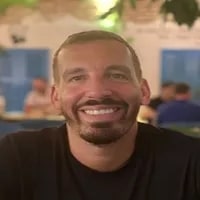How To Overcome Generational Differences In Coaching and Mentoring
Bridging the gap between various generations is no easy task
Posted on 07-05-2024, Read Time: 6 Min
Share:
Highlights:
- Millennials prefer something more on-demand that they can do on their own time and allows them to still receive real-time feedback.
- Bridging the generation gap at the workplace, particularly in a fast-paced tech environment is complex.
- One key component of effective coaching is asking powerful questions and listening to the answers.

- Incorporate Diverse Communication Styles
- Embrace Multigenerational Collaboration
- Implement Reverse Mentoring Programs
- Utilize Powerful Coaching Questions
- Tailor Mentorship to Career Stages
- Promote Inclusive Excellence and Allyship
- Understand Generational Characteristics
- Reflect on Personal Generational Impact
Incorporate Diverse Communication Styles
Bridging the gap between various generations is no easy task. It is always helpful to have a mix of communication styles, varying examples, and different ways to achieve career clarity. The Baby Boomer generation and older prefer to see proven examples of real-life situations.Millennials prefer something more on-demand that they can do on their own time and allows them to still receive real-time feedback. The newer generations (Gen Z, Gen X, etc.) prefer quick steps with quick wins.
Having all generations share their outcomes from coaching and mentoring through presentations, or working together with the leader to work through a process, will make them more prone to working together and less resistant to generational stereotypes.
 |
Timeka Green, Global HR Business Partner and HR Career Coach, Heyyy HR! |
------------------------------------------------------------------------------------------------------
Embrace Multigenerational Collaboration
The reality of a multi-generational workforce is an opportunity to create a much-needed evolution. Generation Z processes information much faster than any generation before them. They are much more mission-driven.However, all generations still have a human-centered desire to be respected. How we go about building that is the piece that makes all the difference. Collaboration and supporting fresh and innovative ways of learning as the new workforce and roles emerge is going to continue to be of vital importance.
 |
Sam Eaton, Business Coach to the HR Community, MindAbility Consultancy Ltd |
------------------------------------------------------------------------------------------------------
Implement Reverse Mentoring Programs
Bridging the generation gap at the workplace, particularly in a fast-paced tech environment like Ling, is complex. In my role as HR Manager, I have found consistent success in an approach called “Reverse Mentoring.” With this strategy, not only do more experienced employees act as mentors to young talent, but younger employees also get the chance to teach older colleagues about new technologies, social media, and current trends. There's mutual respect and learning, which fosters a deep connection between peers of different generations.For instance, we have tech-savvy millennials guiding older employees through advanced digital tools, while the latter share their wealth of experience in industry insight, company processes, and business acumen. This two-way mentorship reinforces a culture of learning, respect, and understanding in both directions, effectively bridging the generation gap. It amplifies the strengths of each age group, fostering harmony, inclusion, and a sense of belonging among all teams.
 |
Jarir Mallah, Human Resources Manager, Ling |
------------------------------------------------------------------------------------------------------
Utilize Powerful Coaching Questions
One key component of effective coaching is asking powerful questions and listening to the answers. Generational language, references, perspectives, and stories are some of the most powerful learnings of mentoring across all levels (for both mentors and mentees). This starts with curating a broad set of coaching questions that meet any individual where they are in their journey.One key tool I have leveraged as a coach is a three-question self-check-in that I send the day before a coaching session. This insight allows me to prepare questions that can help the individual dig deeper into areas they are struggling with or have concerns about. This process also accelerates the coaching session, allowing for faster rapport during the meeting, and an accelerated sense of understanding by both parties.
Over time, you will find that key questions are cross-generational and open the door to greater self-awareness during coaching sessions. An easy first step is to ask the person to reflect on their greatest accomplishment for the week. What did this feel like? Why do you think this rises to the surface as the most memorable? What does that say about your priorities? Your focus? Did prioritizing this have an impact on other projects? Why and how?
As a coach, our role is not just to listen to what is said. We listen to the tone, the body language (if applicable), the order of the answers, the emotions attached to the answers, etc. This is listening to understand and to build trust across the relationship.
 |
Stacie Baird, Chief People Officer, Community Medical Services |
------------------------------------------------------------------------------------------------------
Tailor Mentorship to Career Stages
Consider what stage in their career an employee is in when providing them with mentorship, as your approach should be different for those just starting out than for those who have been on their career journey for some time.It's important to remember that, regardless of where they are at now, everyone has different aspirations for where they want to be, and not everyone's path will be identical.
Success looks different for everyone, no matter which generation they belong to, so in a mentorship relationship, it is important to understand what that looks like for the mentee and help them devise strategies that work for them to best achieve their goals.
 |
Nicole Craveiro, CEO and Fractional CHRO, CraveHRO |
------------------------------------------------------------------------------------------------------
Promote Inclusive Excellence and Allyship
Without a strategic imperative promoting inclusive excellence and allyship, organizations seeking to empower employees in cross-generational coaching and mentorship will not succeed. Excellence in fostering cross-generational mentorship starts with understanding the "so what," and answering the question of why mentoring across age groups matters. When organizational leaders grasp the strategic imperative of embracing a multigenerational workforce and driving cross-generational mentoring relationships, we can then discuss how to bridge the generation gap.Beyond sharing best practices and encouraging collaboration, leaders must deeply value the positive outcomes that come from demonstrating inclusive excellence and allyship at the executive level and beyond. This means providing all employees with clear and actionable demonstrations of the valued behaviors that illustrate how to be successful mentors and mentees, regardless of age or membership in a protected class. Imagine if Phil Knight (at age 53) and Bill Bowerman (at age 26) had not valued each other’s perspectives. Without their openness to coaching and mentoring across generational lines, Nike might not exist as we know it today.
To bridge the generation gap, start with understanding the "so what" to foster a culture that encourages cross-generational mentorship relationships.
 |
Brittany King, Founder and Chief Culture Curator, Curated Corporate |
------------------------------------------------------------------------------------------------------
Understand Generational Characteristics
There is a proverbial magnifying glass focused on this challenging business issue. Gallup's current research concludes that 17% of employees are actively disengaged, 51% are disengaged, and only 32% are engaged. The generation gap in the current workplace can add to the challenge.The good news-bad news scenario is that 70% of employee disengagement can be influenced by the manager or team lead. The good news is that managers can take a proactive approach to really digging in and learning about the different generational characteristics and invest time and energy into helping team members respect their differences and foster a more cohesive workplace environment.
The bad news is that if managers and team leads don't invest the time and effort, the problem will most likely continue to grow. Like Stephen Covey's 5th habit in The 7 Habits of Highly Effective People, seek first to understand, then to be understood. Invest the necessary time to completely understand and help each group understand each other better as well, and you'll be on your way to improving your workplace culture.
 |
S. Paul Moehring, Business Growth and Leadership Coach, Reaching New Heights Coaching |
------------------------------------------------------------------------------------------------------
Reflect on Personal Generational Impact
One interesting step that is important to take in the process of bridging the generation gap is to remember that as a leader, you want to start with internal awareness of self before going into the details of your company or employees. You'll want to slow down and reflect on both how you are behaving in relation to your own generation, as well as how that impacts others, such as your clients, team members, and community at large.It's also important to be keenly aware of your values, mission, and vision as a company to make sure they are front of mind at all times. In short, you need to have self-awareness before knowing how to interact with others successfully.
After you spend some time in curiosity about your generation, the goal then is to begin considering what that means for others in your company, including your marketing, your team development, internal culture, messaging, and employee engagement or mentorship. Each generation brings unique perspectives, values, and behaviors, influencing everything from marketing strategies to workplace culture.
When exploring the generations, you can see that some differences are important to pay attention to in the process of building trust and a strong, authentic relationship and connection with your ideal clients, employees, or candidates. Different generations are thinking about different things; they have different problems to solve, different pain points, and different preferences. Leaders may need to adapt their processes to meet their employees where they are while respecting their own needs as well.
 |
Raeanne Lacatena, Holistic Business Coach, Raeanne Lacatena, Inc. |
Author Bio
 |
Brett Farmiloe is the Founder, CEO & CHRO of Featured. |
Error: No such template "/CustomCode/topleader/category"!

